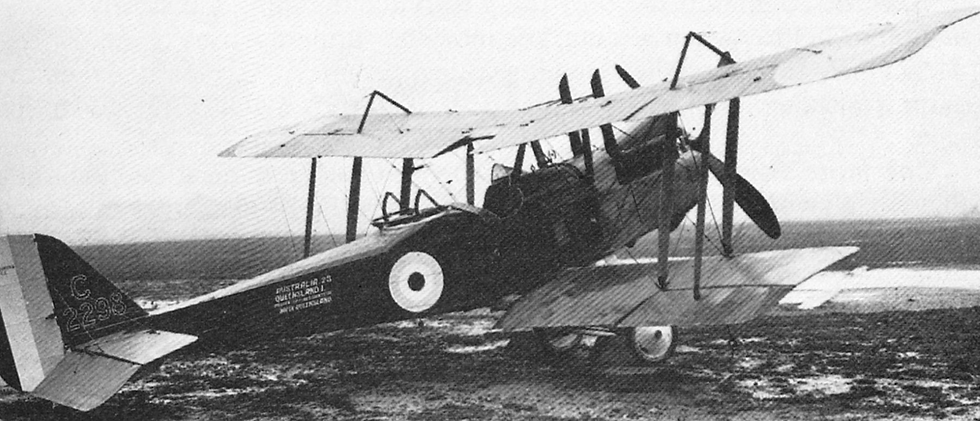
Grave II.C.6 2nd Lieutenant John Aloysius Gerard Henry. 7 Squadron, RAF. Age 19. KIA 28.9.18. Son of Stephen John Henry, J.P., and Roseanna Henry, of St. Gerard's, Burnside Place, Troon, Ayrshire. Flying in an R.E.8, E273. Counterattack patrol. Forced to land and crashed in a shell hole in Belgian lines. Lt A Westell observer was wounded.
No. 7 Squadron was formed at Farnborough Airfield on 1 May 1914 as the last squadron of the Royal Flying Corps (RFC) to be formed before the First World War, but has been disbanded and reformed several times since, the first being after only three months of existence, the latter as early as 28 September 1914. The squadron spent most of the First World War in observation and interception roles and was responsible for the first ever interception of an enemy aircraft over Britain.

No 7 Squadron deployed to France in April 1915, flying Royal Aircraft Factory R.E.5s for reconnaissance and Vickers Gunbuses as escort fighters. Captain John Aidan Liddell of 7 Squadron won the Victoria Cross for his actions on 31 July 1915, when he continued his reconnaissance mission over Belgium after the aircraft was hit by ground fire, the aircraft being badly damaged and Liddell suffering a broken thigh. Although he successfully recovered the R.E.5 to Allied lines, saving his observer, he died of his wounds a month later.
The squadron re-equipped with B.E.2s in 1916, which it used for both bombing and reconnaissance during the Battle of the Somme that year. The B.E.2s were replaced by R.E.8s in July 1917, continuing in the reconnaissance role for the rest of the war, operating in Ypres during the Battle of Passchendaele in the summer and autumn of 1917 and in support of Belgium forces in the closing months of the war. It disbanded at the end of 1919.

Grave I.E.49 494817 Sapper Albert George White. 475th Field Company, Royal Engineers, attached RFC. Age 22. DoW 27.9.17. Son of Charles and Ruth White, of 56, Battersea Road., Easton, Bristol. They were flying in an R.E.8 aircraft on a photographic patrol west of the British lines when they were attacked by Oberleutnant Hans Waldhausen of Jasta 37. The pilot 2nd Lieutenant C B Andrews was wounded.

Oberleutnant Hans Waldhausen was posted to Jasta 37 from the Jastaschule I at Valenciennes on 26 July 1917. He was to make three kills on 27 September 1917 while flying an Albatros DV. His aircraft carried markings of a Star and Crescent on the fuselage, and he was known as the ‘Eagle of Lens’. These were to be his last three kills as he was forced down that day near Souchez by Lt J H Tudhope of 40 Squadron and Flight Commander C D Booker DSC, of 8 Naval Squadron. Waldhausen was taken prisoner and his aircraft was given the RFC number G74. In all, Waldhausen made seven kills two of which were shooting down balloons on 25 and 27 September 1917. He received the Iron Cross 1st Class.
No. 9 Squadron was formed on 8 December 1914 at St-Omer in France, the first outside of the UK, from a detachment of the Royal Flying Corps (RFC) HQ Wireless Flight. Known as No. 9 (Wireless) Squadron, it was tasked with developing the use of radio for reconnaissance missions through artillery spotting. This lasted until 22 March 1915 when the squadron was disbanded and had its equipment dispersed amongst Nos. II, V, 6 and 16 Squadron.
The squadron reformed at Brooklands on 1 April 1915 under the command of Major Hugh Dowding (later commander of RAF Fighter Command during the Battle of Britain) as a radio-training squadron, flying the Farman MF.7, Blériot XI and Royal Aircraft Factory B.E.2s. The Bats moved to Dover on 23 July, re-equipping with the Royal Aircraft Factory B.E.8a, Avro 504 and a single Martinsyde S.1, before returning to St-Omer on 12 December as an army co-operation squadron. Moving to Bertangles on 24 December, No. 9 Squadron commenced bombing missions on 17 January 1916 with the B.E.2c. It flew reconnaissance and artillery spotting missions during the Battle of the Somme in 1916, assisting XIII Corps on the first day. It later operated during the Second Battle of Arras in 1917.
It re-equipped with Royal Aircraft Factory R.E.8s in May 1917, using them for artillery spotting and contact patrols during the Battle of Passchendaele, during which it suffered 57 casualties, and carrying out short range tactical bombing operations in response to the German spring offensive in March 1918. While it started to receive Bristol Fighters in July 1918, it did not completely discard its R.E.8s until after the end of the war. No. 9 Squadron returned to the UK in August 1919, arriving at Castle Bromwich where it remained until disbanding on 31 December 1919.

Comments